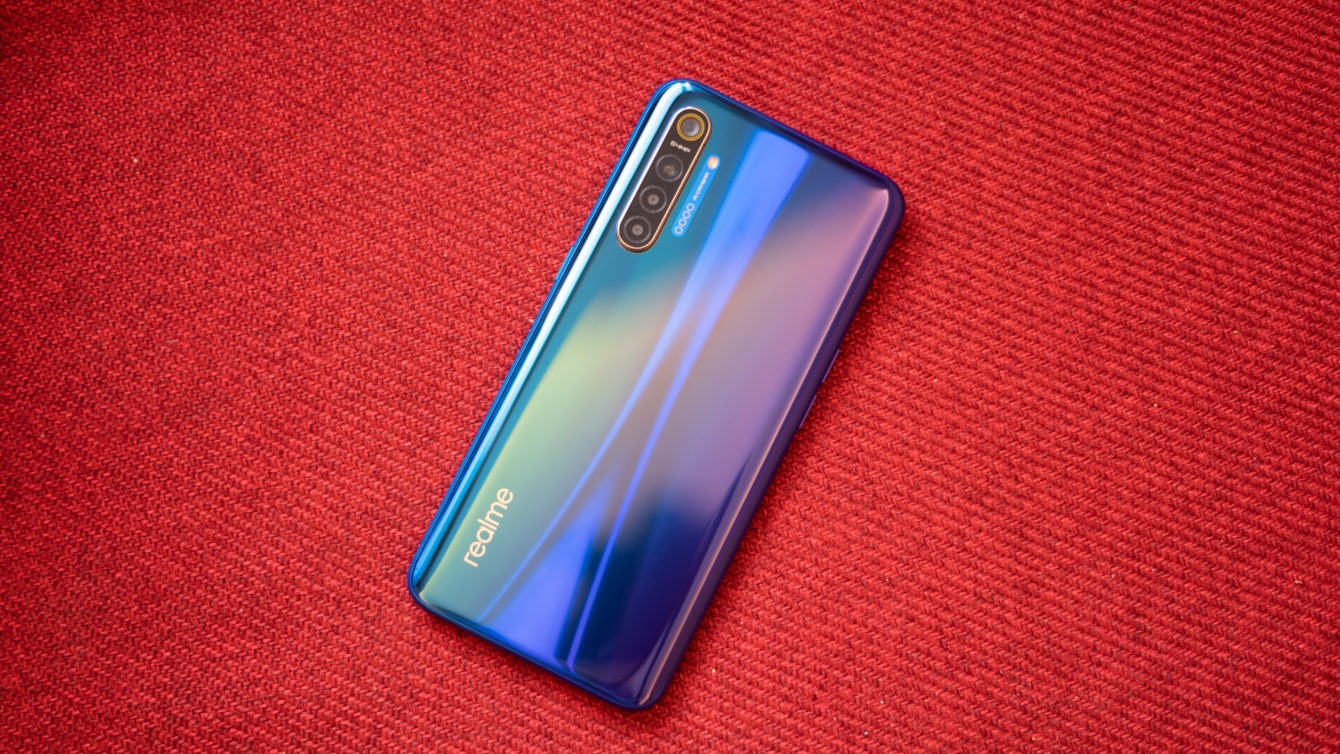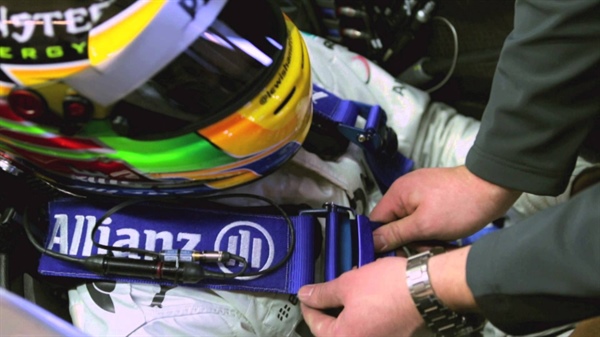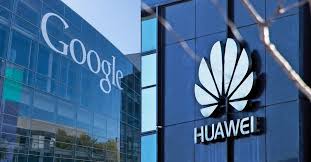Category Archives: Technology news
Google Nest Hub Max – new feature you shouldn’t miss

Google is having The Google Nest Hub Max with some notable differences and a brand new smart display packing. It has a display sitting on a fabric-covered which is similar to the Google Home Hub – known as the previous Google Nest Hub.
The size is one big exception. The Nest Hub Max with a 10in display looks like a large tablet, with while its predecessor has only 7in display. It has an Ambient EQ light sensor like the smaller model to adapt the display brightness to the surroundings of the room. Once again an ambient EQ light sensor is used to adapt on the environment the display’s brightness. It’s also HD and improve the overall viewing experience, allowing users to see what’s going on from a far greater variety of positions in the room.
A hand gesture detection feature is made to allow users to pause videos and do the same action again to resume it by pushing their hand in front of the camera. But in testing this feature did not detect hands all the time.
The Home app easily set up faces, each individual in the household can set their personalised information, don’t need to use their voicei by using calendar notices.
It now features a camera and physically bigger than before, but it can compete with the likes of Amazon’s Echo Show, can’t it?
Owners will make use of the full set of security features if they pay for a subscription. In doing so, while away on a smartphone, you can use the hub’s integration with Nest means as a security camera to check everything at home is fine.
Depending on how much you desire video history, a Nest Aware subscription ranges from £4 to £24 per month. It provides the ability to save clips, setting up activity zones alerts when a person time lapses and access to 24-hour continuous recording.
The trend of virtual streamer in Japan is causing fever on YouTube

In Japan, virtual streamer is becoming a phenomenon and even more attractive than real people. There are millions of stream followers on the Internet and the success of streamers has created a new concept in Japan as virtual YouTubers or VTubers.
Kizuna Ai, the most famous virtual streamer in Japan, is a lovely girl with long hair and a pink headband. More significantly, she is a completely bogus character with images and voices entirely created by 3D technology and artificial intelligence.
“What makes VTubers different from traditional anime cartoon characters is that you can believe that they really exist,” said Takeshi Osaka, founder of Activ8 Inc, the company behind Kizuna Ai‘s presence. will. “This has created an irresistible appeal.”
Beyond the time-consuming and labor-intensive processes of traditional animation, Activ8 uses Hollywood-class motion capture devices to daily create exchanges and content for its characters with 8 million followers. But Activ8 declined to disclose the techniques it is using. “The innovation here is a combination of real-time 3D computer graphics, motion recording technology and video streaming sites like YouTube to create two-way interaction with the audience,” the company said.
Kizuna Ai appeared on YouTube for the first time in December 2016. Technology also opened the door for many similar characters to appear that year. With many computer graphics and 3D models from Unity Technologies, anyone can create their own virtual characters.
It is not difficult to understand when VTubers is popular in Japan where anime and virtual reality are highly valued.
Market research firm User Local Inc estimates there are currently about 9,000 VTubers channels in Japan. The most famous characters were created by a handful of professional studios like Activ8. In less than 3 years, virtual streamer has become a cultural phenomenon. Kizuna Ai appears in many advertisements such as food, supplements and television. She even appeared in the Japan National Tourism Organization’s promotional campaign.
Not stopping here, Japanese VTubers are also being exported to China. Activ8 earlier this year introduced a Chinese version of Kizuna Ai and now attracts 820,000 followers on the video sharing service Bilibili.
Realme XT: The world’s first smartphone with a 64MP sensor

Realme, OPPO’s sub-brand on August 28, officially launched the Realme XT, the world’s first smartphone with a 64MP sensor. Realme XT is said to be a worthwhile upgrade of the camera of the Realme 5 Pro, and is a variant of its Realme X series. This is also the only smartphone launched by Realme to compete directly with the Redmi Note 8 series, specifically the Redmi Note 8 Pro also has a 64MP camera.
Regarding design, Realme XT possesses a quite luxurious and familiar design language. Like most other mid-range smartphones from Realme and OPPO, Realme XT is equipped with a water-drop design screen on the front, this screen uses AMOLED panels with Full HD + resolution and has 6.4 inch size is quite large, built-in optical fingerprint sensor below the screen.
The screen border of the device is also Realme optimized with thin bezels on both sides, while the lower edge is still a bit thick. The notch at the top edge will be where the 16MP f / 2.0 selfie camera is located. Unlike the Realme X that uses a “retract” mechanism, the Realme XT is faithful to the water-drop screen design. This is also a way to help Realme reduce product costs.
To the back, the most prominent feature on this back is a cluster of 4 cameras located vertically on the left corner, including a 64MP main camera using ISOCELL Bright GW1 sensor manufactured by Samsung, an angle camera 8MP ultra wide, a 2MP macro camera and a 2MP camra measure depth. The back is completely constructed from glass, with a layer of toughened Gorilla Glass 5 on both the front and back, helping to increase the durability of the machine. In addition, this back also has a pretty light roaming effect. There will be 2 color options for users to choose from white and pearl blue.
In terms of hardware configuration, Realme XT has quite similar specifications to the Realme 5 Pro, including a Qualcomm Snapdragon 712 chip, combined with 4GB / 6GB / 8GB RAM, 64GB to 128GB internal memory. It comes with a 4000mAh battery, supports fast charging VOOC 3.0 with a capacity of 20W.
Currently, the specific price of Realme XT has not been officially announced. The device will be sold and delivered to users in late September.
Technologies make Formula 1 the safest race in the world

Biometric gloves, helmets withstand impact force of up to 20 tons and high temperature up to 800ºC, halo protects life even when a 2-floor bus falls … The most advanced technology and stringent regulations have turned seemingly unsafe F1 racing cars into utopian safety on every journey.
Formula 1 cars (F1) travel at an average speed of 250-300km / h. Each corner creates a fierce competition between 24 riders and always poses a threat to the lives of people in the car. Technology applications have solved that problem – making racing cars safer than ever.
The hat “accepts” all bumps and temperatures
Each driver is required to wear protective clothing to withstand high temperatures and fire during driving.
The first part of the driver’s face is protected by a helmet made of metamaterials. The hat must pass the tests of FIA (World Motor Vehicle Federation) such as: withstand impact force up to 20 tons, withstand temperatures up to 800ºC, withstand the impact of a Long and heavy steel bars fall freely at a height of over 5 meters … In return, the cost to complete each hat is usually up to over USD 9,000.
HANS – “talisman” of the lumbar vertebrae
Seat belts with HANS technology are one of the talismans of F1 riders
At speeds above 250km / hour, if crashing into a retaining wall, the driver’s neck will suffer a great force, a spinal fracture and it is difficult to preserve life.
Each rider when sitting in the cockpit will have to wear up to 5 protective straps containing the external force suppression technology: 2 shoulder cross wires, 1 rope around the abdomen, 2 wires on the legs. The foot / knee part of the driver is also designed with dynamic damping pads to avoid injury in the event of a collision.
In 1980, two biologists, Jim Downing and Bob Hubard, invented HANS, a device designed so that when a collision occurs, elastic belts absorb and destroy almost all forces. slide down the protective belt over the shoulder of the driver. HANS helps to reduce over 65% of the impact on the head, nearly 90% of the impact on the driver in any case – minimizing possible injuries.
Google wanted to “come back” with Huawei

US tech giant Google said the Trump administration’s ban on Huawei could prompt Chinese technology firm to build a more hackable Android alternative and threaten US interests.
According to the Financial Times, Google has issued a warning to the Trump administration about the risks to US national security if it continues to ban Huawei. Simutaneously, the US software firm wants the government to remove the ban with Huawei soon.
Google senior executives warn that no longer cooperating with Google will push Huawei to develop its own operating system. In fact, the company has developed its own operating system platform called Hongmeng OS or Ark OS for a long time and is gradually improving. It will be a customized “Android version” and an opportunity for hackers to steal information.
Especially, Huawei is a big smartphone company, so the risk of exposing users’ information in allied countries to the US or even the American people is very high.
In the short term, Huawei is clearly suffering from the ban because of losing an important operating system partner like Google. But according to industry experts, this actually brings significant benefits when pushing Huawei to become more independent.
Huawei will strengthen itself and develop technologies to help them stand firm in the wind. That is not to mention, the Chinese government has pledged to provide its full support, increasing R&D funding for technology companies and the country’s industry in the context of US trade sanctions. This inadvertently threatens the dominance of American companies in the long run.
Perhaps aware of the potential risks and significant impact of the ban on revenue from licensing and advertising, Google has hinted at the possibility of asking the government to exclude the company from the list of grants which cooperate with Huawei.
The move promises to help Google manage Android OS, continuously release important security updates to all Huawei smartphones in the world.
It has been more than half a month since the US government officially issued an ordinance to ban US companies from cooperating with Huawei, so far nothing has improved. The US government still considers Huawei, the world’s leading provider of 5G telecommunications network equipment, a leading threat to national security and said it was Beijing’s spy.
Even Mr. Trump once said that Huawei is a dangerous company but left open the possibility of resolving the company’s problems on the negotiating table with Beijing.
On the other hand, the US Department of Commerce has also postponed the ban for another three months to wait for new signals from both sides. During this time, many US companies, including Google, Microsoft, Intel, Qualcomm, and most recently, Facebook all stopped working with Huawei. US government
This week, awei chairman Liang Hua shared with reporters that Google is working with the US Department of Commerce to find a solution to solve problems, and to resume cooperation with Huawei.
He also confirmed that Huawei will not negotiate directly with the and will wait for Google’s negotiations to progress. Huawei representatives even insist, if the company is forced to develop a separate operating system, they can do it very quickly.
iPhones mass-production in India to start during 2019

Foxconn’s founder and chairman, Terry Gou, has confirmed to the media that the company will start iPhones mass-production in India this year.
Terry Gou’s announcement comes when Foxconn, one of China’s largest companies, is expanding its manufacturing operations in India, the world’s second largest smartphone market. At this time, Foxconn is also involved in new high-tech areas, including artificial intelligence (AI) and self-driving cars.
Also during the event in Taipei yesterday, Gou said Foxconn will begin mass production of iPhones in India this year. This will help the company go deeper and promote the development of the smartphone industry in this country.
New production lines in India also show that Apple – Foxconn’s biggest customer – is seeking to increase iPhone sales in a number of untapped large markets, where Apple has also faced rivals which ever surpassed them in China like Huawei and Xiaomi.
According to reports from December last year, the iPhone models produced in India will be high-end devices, namely from the iPhone X. The most recent report said the iPhone X family mass production line will be launched in July.
Currently, it is unclear why Apple decided to assemble high-end iPhone models in India. The company only has a small market share in the smartphone market in India and concentrates on cheaper devices like iPhone SE, iPhone 6S and most recently iPhone 7.
However, it is likely that Apple is looking to diversify production of iPhone models for the US market. At this point, the US-China trade war could raise US import taxes from China by 25%, arguably the main reason why Apple sought to move its iPhone factory out of China. Although everything has eased somewhat, but due to the unpredictability of US President Donald Trump, this is still a wise plan of Apple.
In addition, the production of iPhone X in India may also help Apple achieve its goal of using 30% of components from India – a must for Apple to open a retail store in the country. You may not know, Apple recently reduced the price of iPhone XR in India to 25%.
Google shuts down Google+ flatform

The search giant Google releases recently that the Google+, its failed social network, is finally shut down on Tuesday morning.

What was Google+ social network?
Google+ was launched in June 2011 as an invite-only platform before opening up to the public later in the year and competing with Facebook and Twitter. It was Google’s fourth attempt at a social network and had many of the typical features, with the capability of posting photos and updating status on individual feeds. Its key features can be used to sort friends into “Circles” and make group video calls with “Hangouts”.
When Facebook had “likes” and Twitter had “Favourites”, Google+ had the cumbersomely branded “Plus One” button.
What was the matter?
The platform Google+ failed to win people over, even after Google pushed it upon the thriving YouTube community. But Google decided to close the site only after it discovered a data breach in 2018.
Social media consultant Matt Navarra says that Google+ was predicted to fail from day one
The reasons affected the flatform includes user interface issues, the competition of earlycomer Facebook, the internal disagreement of the leverage of Google+ and the confuse user experience.
Google+ implemented a strict real-name policy and forbidded people who used pseudonyms or screen names, often locking them out of other Google tools such as Gmail.
Unusually, when brands and businesses set up profiles, it deleted their pages. It later admitted this was a mistake and decided businesses could set up Google+ profiles after all. But those who signed up were often confused by what they saw.
How Google+ are killed
In April 2014, Vic Gundotra- the founder of Google+, left the company. Then successful features such as Hangouts and Photos were separated from Google+ and run as independent services. Google started to detach Google+ from its apps such as YouTube and Google Play, much to the glee of video- and app-makers.
In 2015, Google+ had a makeover designed to aim at “communities” but this also failed to set alight interest in the platform. Finally, the discovery of two data breaches triggered Google to close the social network.
In 2018, it admitted viruses in its software caused the private information of up to 52 million members could be accessible by third-party developers.
Suddenly, Google released that few people genuinely used the site.
Now Google+ has been laid on the Google Cemetery website for commemoration.

